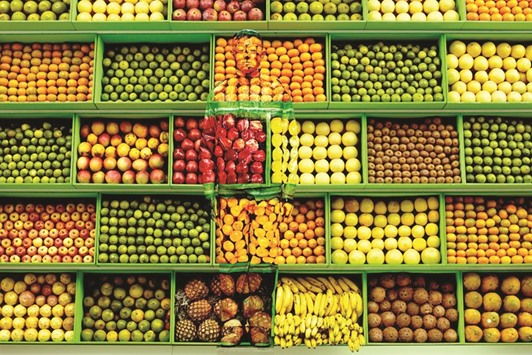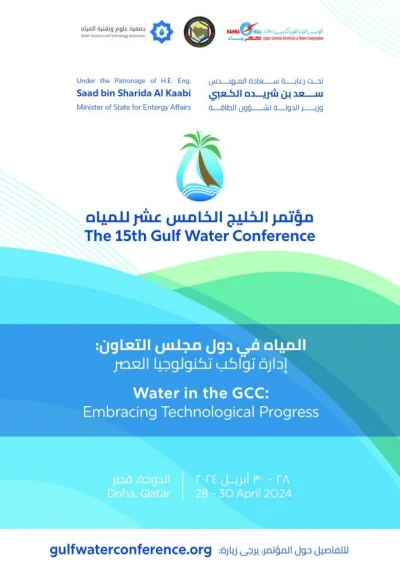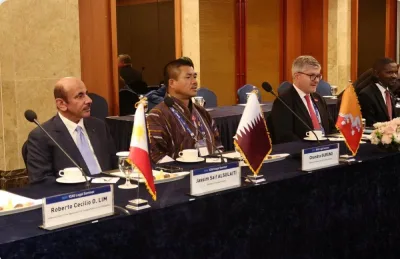Driven by a most relevant theme of ‘Boundaries, Identity and The Public Realm’ in these increasingly fraught times, The New York Times Art for Tomorrow Conference is set to present another fascinating round of discussions, insights, analysis, and contemplations, advanced by great minds, from March 10 to 13 at the W Doha Hotel & Residences.
The conference that will once again unite the who’s who of the global art, media, and creative scene, in Doha, will be led by award-winning New York Times journalists, and will be convened in association with Qatar Museums. The event will explore the tangible contributions that art and cultural development can make to economic growth and nation-building initiatives. The conference will be introduced by Arthur O Sulzberger, Jr., chairman of The New York Times Company and publisher of The New York Times, and the long list of confirmed speakers only attest to the conference’s high stature:
Christo, Artist; Idris Khan, Artist; Liu Bolin, Artist; Bernardo Paz, Art Collector and Creator, Inhotim; Chris Michaels, Head of Digital Media and Publishing, The British Museum; Yannis Behrakis, Photojournalist, Reuters; Dr. Andreas Gorgen, Director General for Culture and Communication, German Federal Foreign Office; Rt. Hon. Adrienne Clarkson, Former Governor General of Canada; Prof. Dr. Hermann Parzinger, President, Prussian Cultural Heritage Foundation; Vilma Jurkute, Director, Alserka Avenue; Pedro Gadanho, Director, Museum of Art, Architecture and Technology, Lisbon; Dia Azzawi, Artist; Sir David Chipperfield, Architect, David Chipperfield Architects; Sheikh Hassan bin Mohamed bin Ali al-Thani, Collector and Founder, Mathaf: Arab Museum of Modern Art; Sultan Sooud al-Qassemi, Columnist and Founder, Barjeel Art Foundation; Allan Schwartzman, Chief Curator and Creative Director, Inhotim, and Founder and Principal, Art Agency, Partners; Daniel Tobin, Co-Founder and Creative Director, UAP (Urban Art Projects); Barthelemy Tuguo, Artist; Julien Breton (a.k.a. Kaalam), Artist; Abdulnasser Gharem, Artist and Founder, The Gharem Studio; Shaweesh, Artist; Julian Payne, Creative Design Director, De La Rue; Prof. Peter Stone, Unesco Chair in Cultural Property Protection and Peace, Newcastle University; Faig Ahmed, Artist; Touria El Glaoui, Founding Director, 1:54 Contemporary African Art Fair; Dr. Zaki Aslan, Regional Representative for the Arab States, The International Centre for the Study of the Preservation and Restoration of Cultural Property; Amanda Pinatih, Art Historian and Curator, Design Museum Dharavi; Jorge Manes Rubio, Artist, Design Museum Dharavi; Tariq al-Jaidah, Managing Director, Al-Jaidah Brothers W.L.L.; and Yorgos Kaminis, Mayor, City of Athens.
Topics of discussion will include areas of collaboration and competition among countries of the Arab world in the creation of a new cultural landscape; the challenge of heritage protection in the context of Palmyra; and the impact of censorship on artistic expression.
A glimpse into the agenda of the conference offers ample reasons to be excited. START Doha Art Fair, we are told, will take its intrepid first steps this Spring, positioning itself as Qatar’s major contemporary art fair, dominating the 29th floor of the W Doha with its raw, industrial space to give visitors a unique experience. START has partnered with the Saatchi Gallery, and CEO Nigel Hurst will be in attendance, as well as leading artist and curator Mahmoud Obadi. Some of the highlights of the agenda, thought-stirring discussions, are as follows:
l Museums and galleries are springing up all over the Gulf, celebrating Arab heritage both ancient and modern. Should Gulf Cooperation Council states collaborate or compete in this new cultural landscape?
l Reuters photojournalist Yannis Behrakis documents the movements of refugees and migrants, dispossessed of almost everything, including their national identity. In creating such images, where does professional detachment end and emotional involvement begin?
l Heritage protection is at the top of the Unesco agenda, and nowhere is it more urgent and significant than the Middle East. The surprise question is not: ‘How can we protect or reconstruct our broken legacies?’, but ‘Should we reconstruct them at all?’
l Three artists — Faig Ahmed, Subodh Gupta, and Barthelemy Toguo – from very different countries, and with very different approaches to expressing their relationship to their own national culture, compare notes.
l Rules written and unwritten; expression, oppression, and pressure; private sedition and the public realm. All converge in the heat of the censorship question, which is, on the face of it an easy one to answer when it comes to artistic expression. But is it? Be prepared for some surprises in this panel discussion featuring Abdulnasser Gharem, Artist and Founder, Gharem Studio Shaweesh; and Dia Azzawi, Artist.
l Access to culture and education in and between nations has become a key source of soft power and an increasingly popular element of cultural diplomacy. Are museums the new diplomats of society?
The 2017 New York Times Art for Tomorrow Conference is organised in collaboration with START Solo and is supported by headline sponsor Richard Mille, bronze sponsor Federal Foreign Office of Germany and airline partner Qatar Airways. The host sponsors are Jaidah Holdings and W Doha Hotel & Residences.

Artist Liu Bolin challenges his audience by literally disappearing into the background. u201c It’s my way to convey all the anxiety I feel for human beings,u201d he says.


